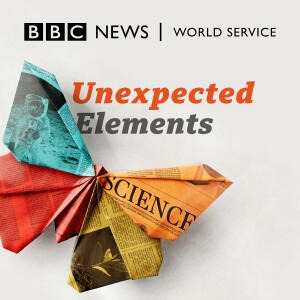
Two-million-year-old molecular fossils reveal flourishing woodlands and widespread animals in Greenland's pre-Ice-Age past, and give hints to the Arctic’s future under global warming. We hear from a molecular palaeontologist and a climate modeller.
DNA also reveals the enduring genetic influence of our extinct Denisovan cousins on disease immunity in modern Island Southeast Asians.
And the art and science of 3D-printing violins
If your home is drafty, filling in holes and cracks can help tackle rising energy bills, and lower your carbon footprint. But is there a limit to how airtight we should make our homes? That’s what CrowdScience listeners Jeff and Angie wondered when weatherproofing their doors and sealing up cracks for the winter. Once every last gap is blocked, will enough air get in for them to breathe properly? How would they know if they’ve gone too far?
With Covid-19 making us more aware than ever of the importance of good ventilation, CrowdScience investigates how to make your home cosy and energy-efficient without sacrificing fresh air in the process. And we find out how, in hotter climates, you can carefully tap into your drafts, to reduce energy-intensive air conditioning.
With contributions from Kimble Smith, Professor Nicola Carslaw, Dr Iain Walker, Marion Baeli and Dr Yashkumar Shukla.
(Image credit: Beth Zaiken/bethzaiken.com)
view more
More Episodes
Seismic events on Mars
 2022-10-30
2022-10-30
 2022-10-30
2022-10-30
The most powerful explosion ever recorded
 2022-10-23
2022-10-23
 2022-10-23
2022-10-23
The final moments of DART
 2022-10-01
2022-10-01
 2022-10-01
2022-10-01
Should we mine the deep sea?
 2022-09-24
2022-09-24
 2022-09-24
2022-09-24
The genetics of human intelligence
 2022-09-11
2022-09-11
 2022-09-11
2022-09-11
The China Heatwave and the New Normal
 2022-09-04
2022-09-04
 2022-09-04
2022-09-04
Surprises from a Martian Lake Bed
 2022-08-28
2022-08-28
 2022-08-28
2022-08-28
Deadly drought
 2022-08-20
2022-08-20
 2022-08-20
2022-08-20
Icelandic volcano erupts again
 2022-08-14
2022-08-14
 2022-08-14
2022-08-14
The first galaxies at the universe's dawn
 2022-07-30
2022-07-30
 2022-07-30
2022-07-30
Heat waves in the Northern Hemisphere
 2022-07-23
2022-07-23
 2022-07-23
2022-07-23
Long Covid ‘brain fog’
 2022-07-11
2022-07-11
 2022-07-11
2022-07-11
Extreme heat death risk in Latin America
 2022-07-03
2022-07-03
 2022-07-03
2022-07-03
Monster microbe
 2022-06-26
2022-06-26
 2022-06-26
2022-06-26
Thirty years after the Earth Summit
 2022-06-19
2022-06-19
 2022-06-19
2022-06-19
012345678910111213141516171819
Create your
podcast in
minutes
- Full-featured podcast site
- Unlimited storage and bandwidth
- Comprehensive podcast stats
- Distribute to Apple Podcasts, Spotify, and more
- Make money with your podcast
It is Free
- Privacy Policy
- Cookie Policy
- Terms of Use
- Consent Preferences
- Copyright © 2015-2024 Podbean.com



